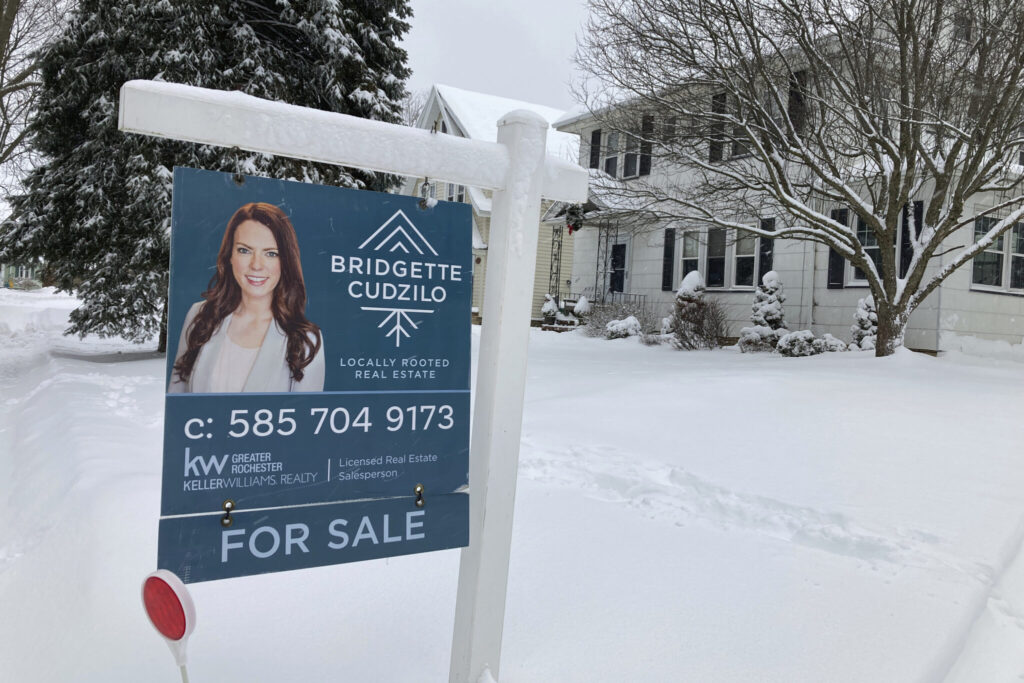The average long-term U.S. mortgage rate dropped below 7% to its lowest level since early August, another boost for prospective homebuyers who have largely been held back by sharply higher borrowing costs and heightened competition for relatively few homes for sale. The average rate on a 30-year mortgage dropped to 6.95% from 7.03% last week, mortgage buyer Freddie Mac said Thursday. A year ago, the rate averaged 6.31%.
Quick Read
- Decline in 30-Year Mortgage Rates: The average rate on a 30-year mortgage has decreased to 6.95% from 7.03% last week, marking the lowest level since early August. This rate is a significant drop from the 7.79% peak in late October, which was the highest since late 2000.
- Increase in 15-Year Mortgage Rates: While the 30-year rate fell, the average rate on 15-year fixed-rate mortgages, often used for refinancing, increased slightly to 6.38% from 6.29% last week.
- Influence of Treasury Yields: The change in mortgage rates is influenced by the movement in the 10-year Treasury yield, which lenders use as a benchmark. The yield has declined recently, fueling hopes that inflation is subsiding and that the Federal Reserve may stop rate hikes.
- Federal Reserve’s Influence: The Federal Reserve’s recent decision to keep its main interest rate steady and expectations to cut rates next year have also contributed to the decline in mortgage rates.
- Impact on Housing Market: The higher mortgage rates over the past year have dampened homebuying activity, with sales of previously occupied U.S. homes down 20.2% for the first ten months of the year. The recent reduction in rates could potentially thaw the housing market in 2023.
- Comparison to Past Rates: Despite the recent decrease, current mortgage rates are significantly higher than two years ago, when the average rate for a 30-year home loan was around 3.12%.
- Effect on Home Inventory: Higher rates compared to recent historical lows are discouraging homeowners who secured low rates from selling, contributing to the low inventory of homes on the market.
- Increase in Mortgage Applications: The decline in mortgage rates has led to a rise in mortgage applications, with six consecutive weeks of increases.
The recent decrease in long-term U.S. mortgage rates below 7% presents a potential boost for the housing market, though rates remain high compared to historical lows. The Federal Reserve’s future decisions on interest rates will continue to play a crucial role in mortgage rate trends and the broader housing market.
The Associated Press has the story:
Average long-term US mortgage rate dips below 7% to its lowest level since Aug.
Newslooks- LOS ANGELES (AP)
The average long-term U.S. mortgage rate dropped below 7% to its lowest level since early August, another boost for prospective homebuyers who have largely been held back by sharply higher borrowing costs and heightened competition for relatively few homes for sale.
The average rate on a 30-year mortgage dropped to 6.95% from 7.03% last week, mortgage buyer Freddie Mac said Thursday. A year ago, the rate averaged 6.31%.
Borrowing costs on 15-year fixed-rate mortgages, popular with homeowners refinancing their home loan, edged up this week, lifting the average rate to 6.38% from 6.29% last week. A year ago, it averaged 5.54%, Freddie Mac said.
The latest drop in rates is the seventh in as many weeks. Mortgage rates have been easing since late October, when they reached 7.79%, the highest level since late 2000.
The pullback has echoed a decline in the 10-year Treasury yield, which lenders use as a guide to pricing loans. The yield, which in mid October surged to its highest level since 2007, has been falling on hopes that inflation has cooled enough for the Federal Reserve to finally stop raising interest rates.
Those hopes strengthened Wednesday after the Fed held its main interest rate steady for the third straight time, and its officials signaled that they expect to begin cutting rates beginning as early as next summer.
Investors’ expectations for future inflation, global demand for U.S. Treasurys and what the Fed does with its benchmark federal funds rate can influence rates on home loans.
“Given inflation continues to decelerate and the Federal Reserve Board’s current expectations that they will lower the federal funds target rate next year, we likely will see a gradual thawing of the housing market in the new year,” said Sam Khater, Freddie Mac’s chief economist.
The sharp runup in mortgage rates that began early last year has pushed up borrowing costs on home loans, reducing how much would-be homebuyers can afford even as home prices have kept climbing due to a stubbornly low supply of properties on the market. That’s weighed on sales of previously occupied U.S. homes, which are down 20.2% through the first 10 months of this year.
The recent downward shift in mortgage rates is a welcome development for homebuyers. Mortgage applications notched their sixth consecutive weekly increase last week, according to the Mortgage Bankers Association.
Still, the average rate on a 30-year home loan remains sharply higher than just two years ago, when it was 3.12%. The large gap between rates now and then is contributing to the low inventory of homes for sale by discouraging homeowners who locked in rock-bottom rates two years ago from selling.







